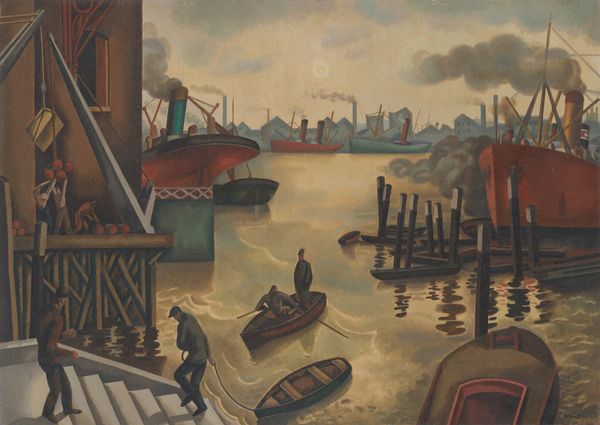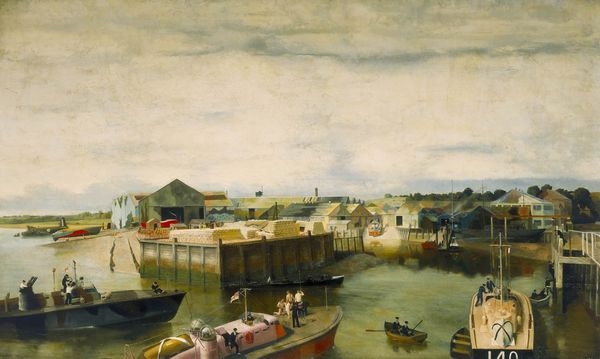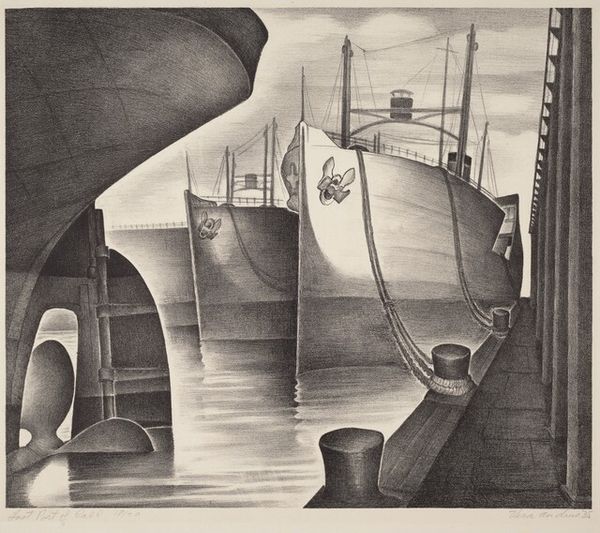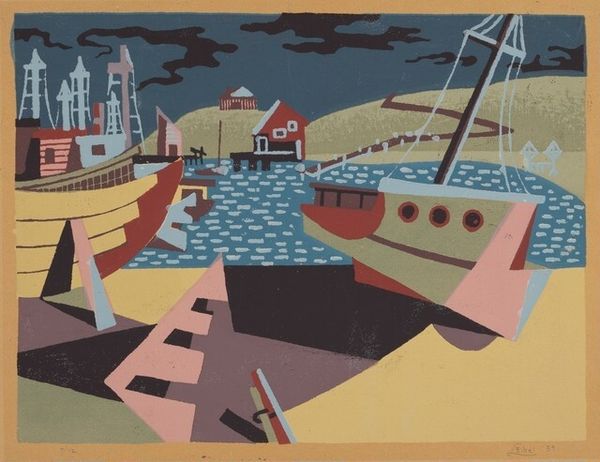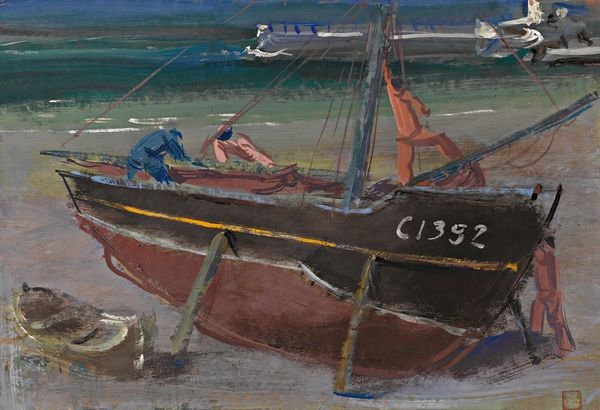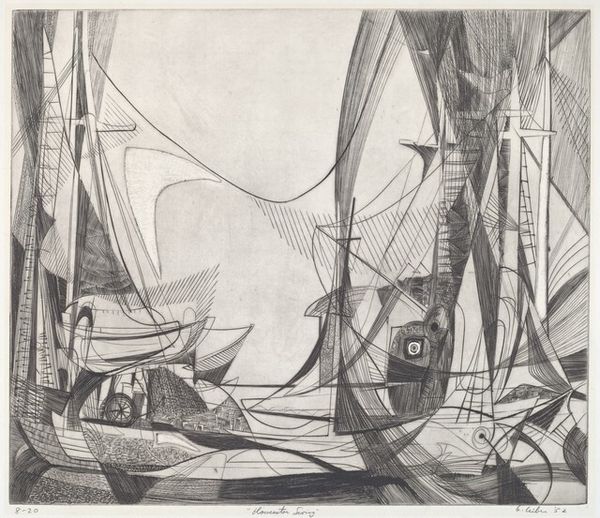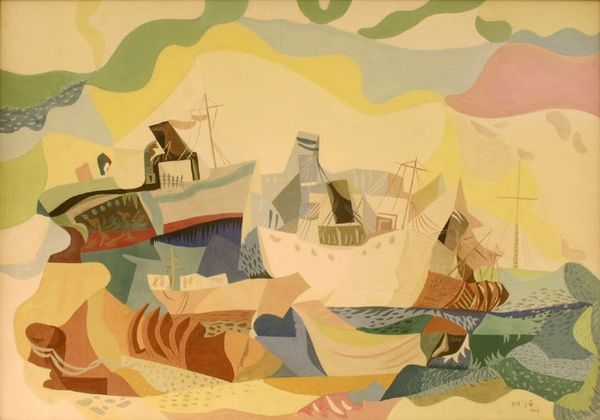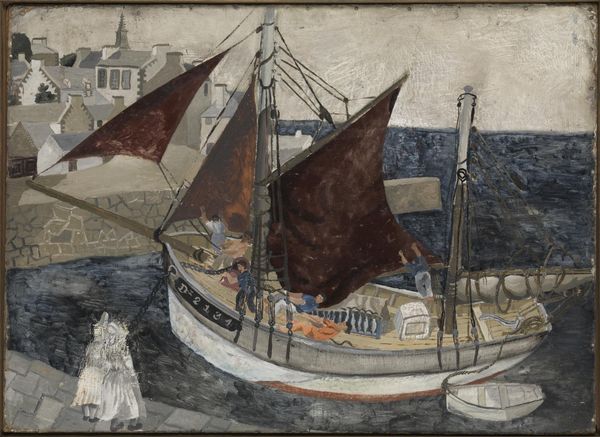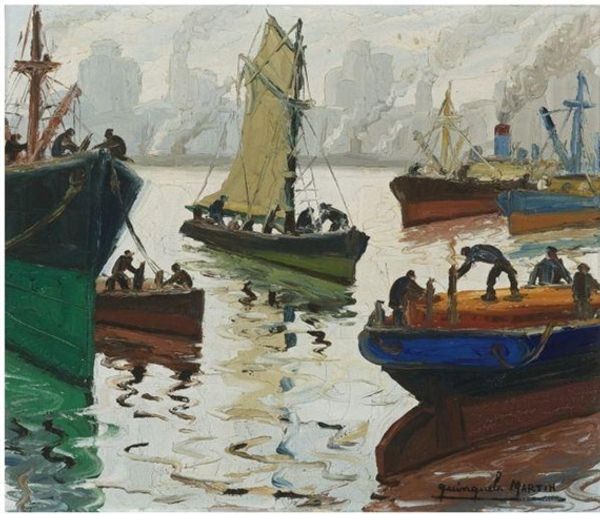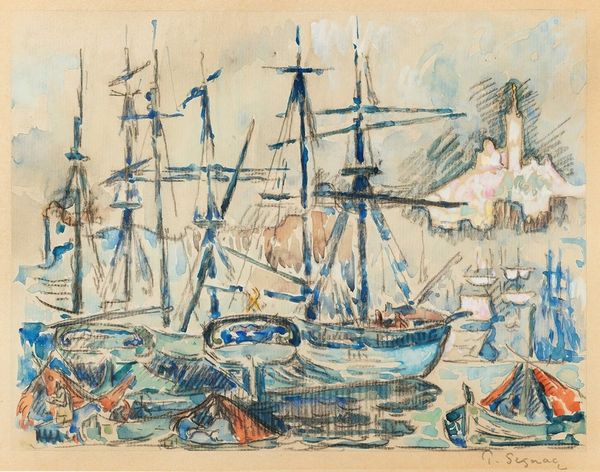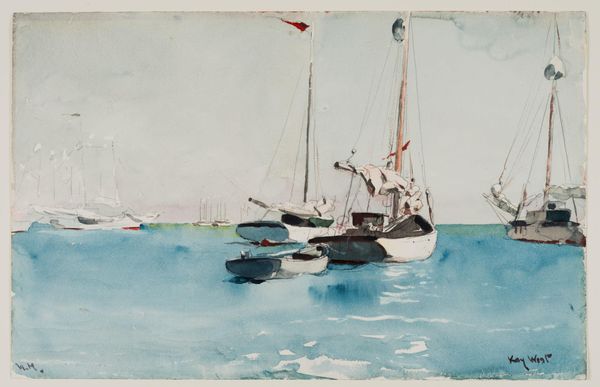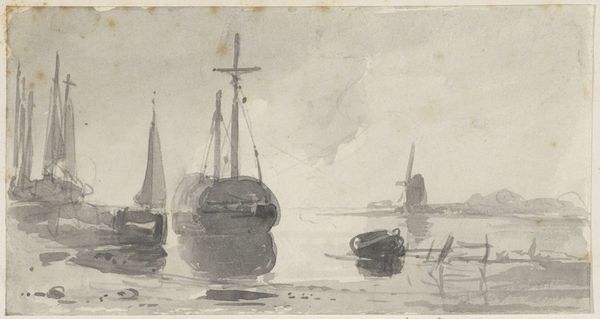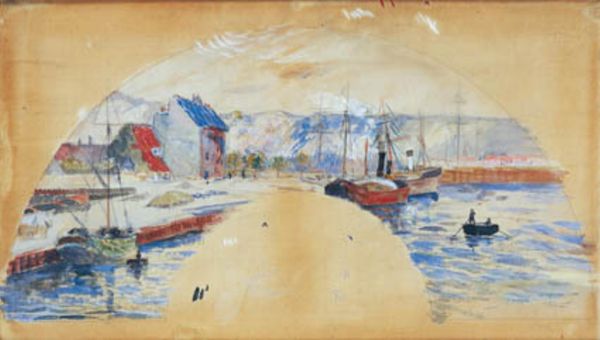
Dimensions: support: 635 x 889 mm
Copyright: © The estate of Edward Wadsworth | CC-BY-NC-ND 4.0 DEED, Photo: Tate
Editor: So, this is Edward Wadsworth’s “Seaport,” undated, in the Tate collection. It’s a really interesting piece - almost like a stage set with those flattened ships. What do you make of it? Curator: It's as if Wadsworth has distilled the essence of the industrial harbor, hasn’t he? A kind of dreamscape constructed of hard edges and muted colours. Perhaps a commentary on the uneasy peace between man and nature, or a premonition of things to come? What’s your take? Editor: I guess I hadn’t thought about it that deeply. It just struck me as oddly still. Curator: It's that stillness, that quiet geometry, which holds so much power, don't you think? Editor: Definitely something to think about. Thanks!
Comments
Join the conversation
Join millions of artists and users on Artera today and experience the ultimate creative platform.
tate 7 months ago
⋮
In the early 1920s Wadsworth developed a new kind of painting that suited the widespread mood of restlessness and need for escape after the first world war (1914-18). Hiking home from a holiday in Newlyn in 1920 he decided to paint a series of harbour scenes similar to Turner’s engravings of The Harbours of England. In the following year an inheritance enabled him to travel abroad; Seaport was painted from sketches made in France, probably at La Rochelle. Using tempera, a technique requiring swift and accurate handling, Wadsworth combines realistic detail with a dream-like atmosphere redolent of the past. Gallery label, April 2005
